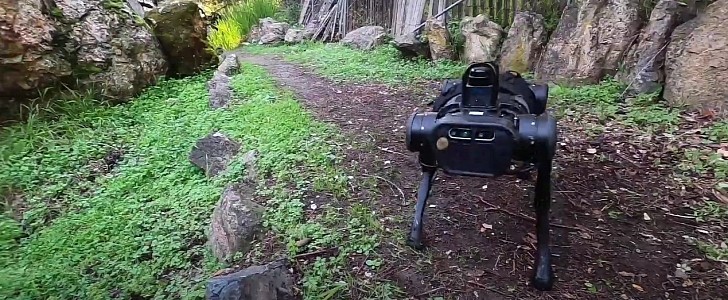We’ve seen robots that can dance, climb stairs, and even fetch beer, but they are usually programmed to do these tricks. Well, a team of researchers from Facebook (yes, you read that right) has developed a new model for robotic locomotion that allows legged robots to adapt to any environment in a matter of seconds, without any prior knowledge.
Most legged robots usually achieve locomotion by being taught to navigate in different environments through a combination of hand-coding and learning techniques. What Facebook is proposing is a new method called Rapid Motor Adaptation (RMA).
Researchers say that this is the first learning-based technology that allows a legged robot to adapt to its environment by exploring and interacting with its surroundings. Through this interaction, RMA employs end-to-end learning, including directly generating joint positions without the use of predefined leg motions or other prior knowledge.
To simulate scenarios ahead of the real challenge, the team used something called “reinforcement learning” and “supervised learning.” The combination of these methods enabled the robot to adapt to new situations in just fractions of a second.
For the real-world test, the researchers used a four-legged robot developed by Chinese startup Unitree. The RMA-enabled robot outperformed a non-RMA deployment, as the videos released by Facebook show how it can conquer any terrain. From sand, rocks, and mud to tall grass, and rocks, it has a 100% success rate. The team even pours oil onto an already slippery surface, and the robot crosses it without failure.
Even if it has never encountered rugged terrain, grass, or stairs throughout training, it successfully walked through a cement pile and a pile of pebbles in 80 percent of the tests. Scientists went as far as to throw a 12 kg (26 lbs) weight on it, and the robot did not wobble one bit.
According to Facebook, this new AI advancement could lower the cost of robots in the future. The capability of adapting to an unknown environment in real-time could also help in future search and rescue operations, particularly in areas that are too dangerous or hard to reach for people.
Researchers say that this is the first learning-based technology that allows a legged robot to adapt to its environment by exploring and interacting with its surroundings. Through this interaction, RMA employs end-to-end learning, including directly generating joint positions without the use of predefined leg motions or other prior knowledge.
To simulate scenarios ahead of the real challenge, the team used something called “reinforcement learning” and “supervised learning.” The combination of these methods enabled the robot to adapt to new situations in just fractions of a second.
For the real-world test, the researchers used a four-legged robot developed by Chinese startup Unitree. The RMA-enabled robot outperformed a non-RMA deployment, as the videos released by Facebook show how it can conquer any terrain. From sand, rocks, and mud to tall grass, and rocks, it has a 100% success rate. The team even pours oil onto an already slippery surface, and the robot crosses it without failure.
Even if it has never encountered rugged terrain, grass, or stairs throughout training, it successfully walked through a cement pile and a pile of pebbles in 80 percent of the tests. Scientists went as far as to throw a 12 kg (26 lbs) weight on it, and the robot did not wobble one bit.
According to Facebook, this new AI advancement could lower the cost of robots in the future. The capability of adapting to an unknown environment in real-time could also help in future search and rescue operations, particularly in areas that are too dangerous or hard to reach for people.









